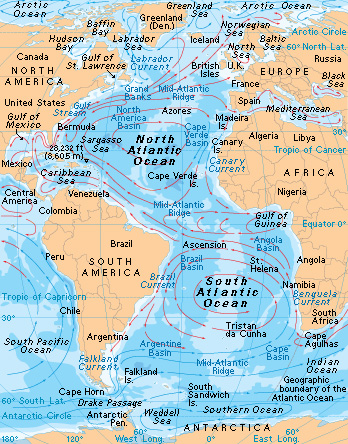Saint Helena << huh LEE nuh >> is a British island in the Atlantic Ocean. It lies about 1,200 miles (1,930 kilometers) off the southwest coast of Africa, and about 700 miles (1,100 kilometers) southeast of Ascension Island, which is the nearest land. St. Helena is famous because Napoleon Bonaparte was forced to live there from 1815 until his death in 1821 (see Napoleon I).

The Portuguese discovered St. Helena in 1502, but it has belonged to Britain since 1673. It serves as the administrative center for certain other British islands in the southern part of the Atlantic Ocean. These include Ascension Island and the Tristan da Cunha group, which consists of Tristan da Cunha, Gough, Inaccessible, and Nightingale islands.
St. Helena is rough and mountainous. It covers 47 square miles (122 square kilometers) of lonely, volcanic wasteland. Barren cliffs rise 1,000 feet (300 meters) above sea level. The only village and port is Jamestown, the island capital. It lies at the mouth of a small mountain stream near James Bay. St. Helena has a population of about 8,000. The people are Europeans, East Indians, and Africans.

Less than a third of St. Helena can be used for raising crops. The chief crops include coffee, potatoes, and vegetables. Grasslands where cattle and sheep graze cover part of the island. Fishing is also an important industry. Fish products are the main export.
